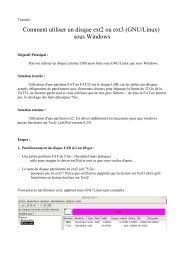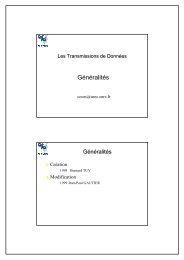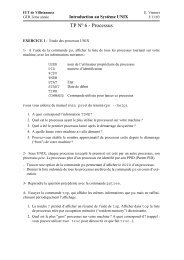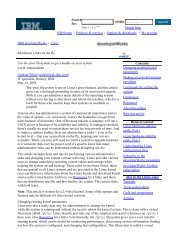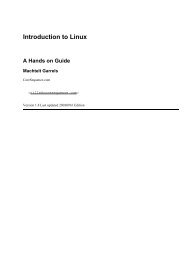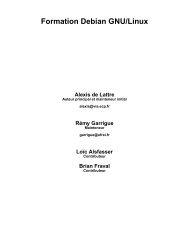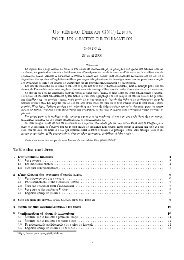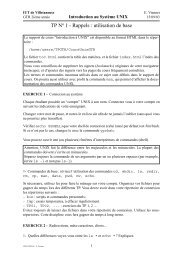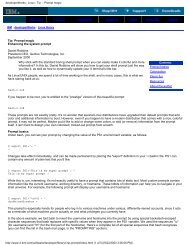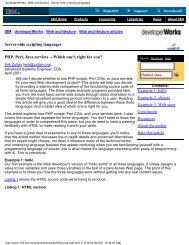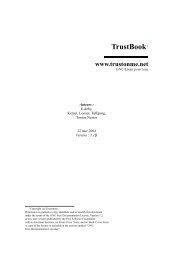Tcl/Tk quick start - Free
Tcl/Tk quick start - Free
Tcl/Tk quick start - Free
You also want an ePaper? Increase the reach of your titles
YUMPU automatically turns print PDFs into web optimized ePapers that Google loves.
Presented by developerWorks, your source for great tutorials<br />
ibm.com/developerWorks<br />
string as input and generates a properly parsed list, breaking the string at the specified<br />
character. join performs the complementary operation, taking list elements and stringing<br />
them together, separated by a joinstring.<br />
<strong>Tcl</strong> arrays<br />
The shortcut to understanding <strong>Tcl</strong> arrays is to regard them in the same light as you would a<br />
Perl hash. The array is not a numerically indexed linear data structure, unless you choose to<br />
impose that interpretation upon your data. The index (or key) may be any string, although<br />
strings with spaces need either to be quoted, or a variable reference.<br />
Just as with normal variables, arrays are initialized with the set command, as shown below.<br />
The index is given inside parentheses. Please note that the parentheses do not provide<br />
grouping like curly brackets or double quotes. Once initialized as an array, a variable may not<br />
be accessed as a singular variable. As shown at the bottom of the listing below, array<br />
elements may also be lists.<br />
~/tcltk$ tclsh<br />
% set People(friend) Tom<br />
Tom<br />
% set People(spouse) Marcia<br />
Marcia<br />
% set People(boss) Jack<br />
Jack<br />
% array names People<br />
friend boss spouse<br />
% set Person $People(friend)<br />
Tom<br />
% array get People<br />
friend Tom boss Jack spouse Marcia<br />
% set People(friend) \<br />
[concat $People(friend) Bob]<br />
Tom Bob<br />
% set Person $People(friend)<br />
Tom Bob<br />
%<br />
More <strong>Tcl</strong> arrays<br />
The array command is a multi-purpose tool, much like string. The commands are array exists<br />
to test a variable for existence as an array, array get to convert to list format, array set to<br />
convert from list to array, array names to return a list of indices, and array size to return the<br />
count of indices. Searching through an array has its own set of four commands: array<br />
<strong>start</strong>seach, array anymore, array nextelement, and array donesearch.<br />
Although <strong>Tcl</strong> arrays are one-dimensional by design, there is an elegant way to simulate<br />
multi-dimensional constructs. Since indices are arbitrary strings, a 2D array might be<br />
declared as follows:<br />
set i 1 ; set j 10<br />
set array($i,$j) 3.14159<br />
incr $j<br />
set array($i,$j) 2.71828<br />
<strong>Tcl</strong>/<strong>Tk</strong> <strong>quick</strong> <strong>start</strong> Page 10 of 29



